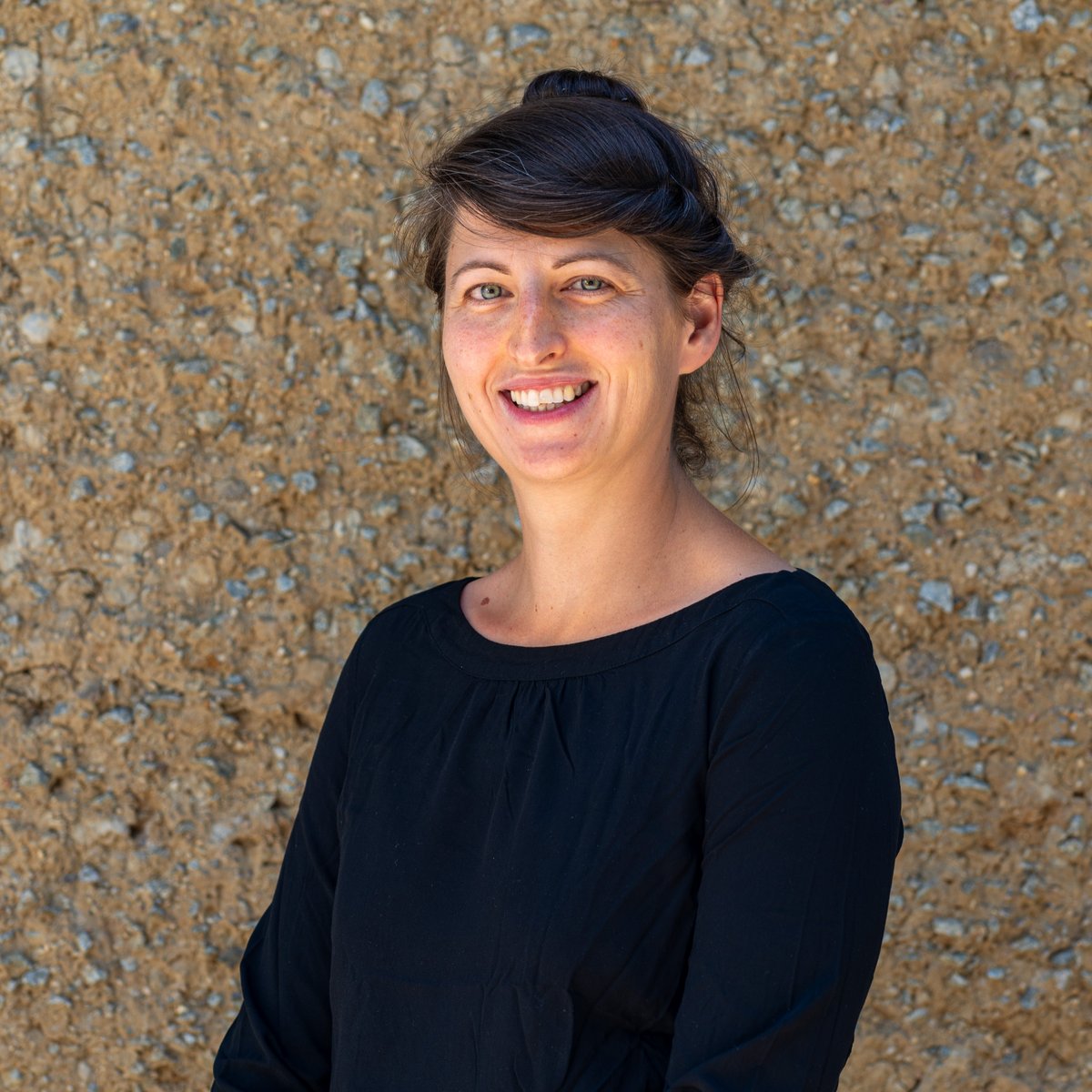
Agnès Klöden-Billemont Arch.D.E.
Akademische Mitarbeiterin/Doktorandin
Konrad-Wachsmann-Allee 4
03046 Cottbus
LG 2B, R. 1.16
Tel. +49 355 - 69 2075
Fax. +49 355 - 69 3046
kloedenb(at)b-tu.de
| derzeit | Promotionsvorhaben: „Urbane Mischung in neuen Stadtquartieren. Diskurs und Praxis eines paradigmatischen Leitbildes in Deutschland und Frankreich. (Arbeitstitel)“ |
| seit 2015 | akademische Mitarbeiterin an der BTU Cottbus-Senftenberg am Fachgebiet Stadtplanung |
| 2014 - 2015 | Lehrbeauftragte für Architektur und Städtebau, Akademie der bildenden Künste, Nürnberg |
| 2012 | Gründung von Atelier2+ mit Elena Pavlidou-Reisig |
| 2011 | Freie Mitarbeit in verschiedenen Architekturbüros in Berlin |
| 2008 - 2010 | Mitarbeit bei LIN Architects-Urbanists, Berlin |
| 2007 - 2009 | DSA Architecte-Ubraniste, Ecole Nationale Supérieure d'Architecture, de la Ville et des Territoires à Marne-la-Vallée |
| 2006 - 2007 | Mitarbeit bei Atlantes Architekten, Lille |
| 2006 | Architecte diplômée d'Etat |
| 2001 - 2006 | Studium der Architektur in Lille (ENSAPL) und Göteborg (Chalmers) |
„Urbane Mischung in neuen Stadtquartieren. Diskurs und Praxis eines paradigmatischen Leitbildes in Deutschland und Frankreich. (Arbeitstitel)“
(engl.Urban Mix in New Urban Quarters. Discourse and Practice of a Paradigmatic Model in Germany and France.)
Since the questioning of the modern city paradigm in the sixties and seventies of the 20th century, a broad consensus has emerged regarding the qualities of the historically grown city (Reicher, Klein 2017:121; Roskamm 2013). A central point of criticism of modernity was strict functional separation, and "terms like urbanity, mix, and density have [since] become universally accepted models" (Roskamm 2013:13). The current call for urbanity also aligns with housing market trends (Bricocoli, Savoldi 2013) and sustainability discourse goals (UBA, 2018). "Urban life" has become a widespread marketing argument (Reicher, Klein 2017:121). The model of "Urban Mix" associates social and functional diversity as well as spatial and structural density. However, these aspects are not precisely defined, and there is no uniform understanding of this model. In Germany, the debate about such a "mixed city" is heavily laden with its "historical-cultural dimension" (Roskamm 2013; Frey, Koch 2010). This tendency threatens to overshadow the substantive or programmatic aspects of these models. In France, there is also a lively discussion about social and functional mixing in new urban development projects. However, these are primarily addressed through city production (la fabrique de la ville) and the role of public action (l'action publique). This work will focus on the model of Urban Mix and the question of producing mixed new urban quarters in Germany and France. The emphasis is on actors involved in the development of urban quarters, especially on strategies and forms of cooperation between private investors and public decision-makers. The goal is to examine the transferability of approaches and practices to the German context through the analysis of French examples.
Future Narratives of Small Towns:
The scientific goal of this PROCOPE-funded project by DAAD, involving young researchers and established scholars from BTU Cottbus-Senftenberg and Université Clermont Auvergne, is to compare emerging future narratives about small towns in France and Germany. The aim is to contextualize them historically in their respective contexts to distinguish similar and different developmental paths. Additionally, the project aims to examine the formation of local territorial narratives and question their impact (or lack thereof) on urban development, local development practices, and the conflicts arising in this context. In other words, the objective is to gain new insights into discursive urban practices with a focus on small towns in the new/post-pandemic context. These questions will be explored through case studies in selected regions of both countries, particularly in Auvergne (France) and Lausitz (Germany) - the locations of the participating university institutes - using various thematic approaches.
Wirkungsforschung in Architektur und Städtebau
(engl. Impact Research in Architecture and Urban Planning)
The conception of architectural and urban planning, as well as public spaces such as parks and squares, is typically associated with ideas regarding the societal, social, cultural, political, and identity impacts to be achieved. However, a clarification of the actual fields of impact and productive research methods and theories has been lacking.
The DFG Network Impact Research in Architecture and Urban Planning: Interdisciplinary Theories and Methods responds to this clear need for definitional work on the concept of the impacts of the built environment. It consolidates disciplinarily scattered knowledge, each focusing on specific impact fields: conscious and unconscious perceptions by individuals, individual or collective behavior and usage patterns, and the effects that architecture has in spheres such as the economy, social aspects, and culture. The network thus focuses its research interest in contrast to the intentions of actors during the design or planning phase of architecture, which have been more extensively researched until now.
2022 “Nantes, Iconic Palimpsest – From Landmark to Flagship” (Vortrag) at the RC21 Conference"Ordinary Cities in Exceptional Times" held at the Harokopio University in Athen from 24 – 27 of August
Flamm, Lena; Maikämper, Moritz; Klöden-Billemont, Agnès; Stevens, Miller; Weidner, Silke: (Hg.)
"PROVINZSTÄDTE NEU DEFINIERT – Hochschultag vor Ort der Nationalen Stadtentwicklungspolitik - Cottbus 2017", Tagungsdokumentation, BTU Cottbus-Senftenberg 2017
2017 "PROVINZSTÄDTE NEU DEFINIERT" Hochschultag vor Ort der Nationalen Stadtentwicklungspolitik - BTU Cottbus-Senftenberg – Mitglied des Organisationsteam und Vortrag im Workshop zur Daseinsvorsorge
2016 „Montreuil – une nouvelle den(s)cité“ Workshop mit der Stadt Montreuil, Master-Studierende der Ecole d’Architecture de la Ville et des Territoires de Marne-la-Vallée und der BTU Cottbus-Senftenberg (FG Stadtplanung)
2016 „Umbau von Großwohnsiedlungen - Berlin Marzahn - Hellersdorf“ (Stadtführung) im Rahmen der Studienreise des Post-Master Programms (DSA) „Architecte – Urbaniste“ der Ecole d’Architecture de la Ville et des Territoires de Marne-la-Vallée
